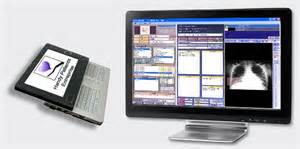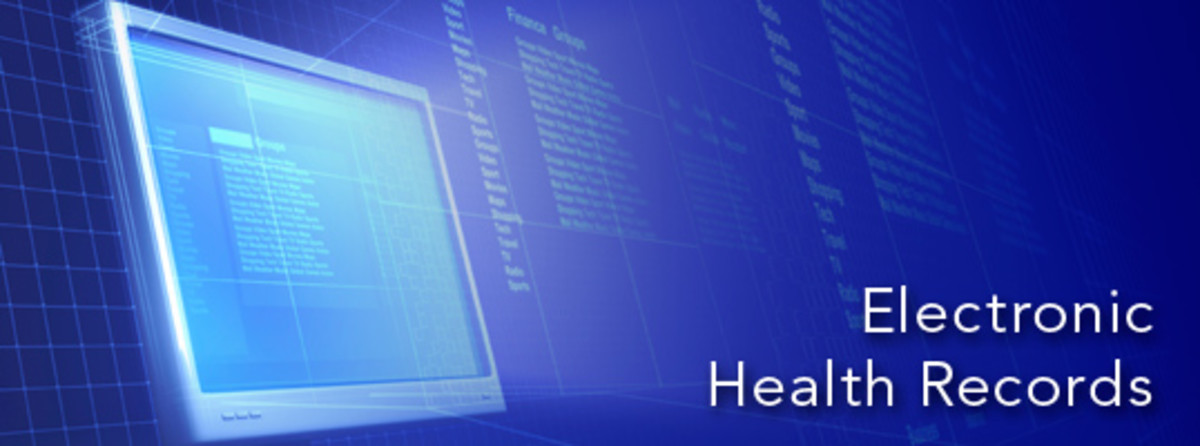Advantages and Barriers of Electronic Health Records (EHRs)

EHR: Advantages and Barriers for the Consumer
Use of electronic health records (EHR) will bring together the world of healthcare and patients. The Institute of Medicine (2003) states that patients and healthcare providers can communicate electronically and increase connectivity through e-mail, Web messaging, and an integrated health record (as cited in McGonigle & Mastrian, 2009, p. 222). The future will continue to trend toward consumer empowerment. Patient support is supplemented by the EHR through interactive computer-based education, home telemonitoring, and telehealth (McGonigle & Mastrian, 2009, p. 222). The EHR can also benefit patients through electronic scheduling, electronic insurance eligibility validation, and claim authorization and prior approval (McGonigle & Mastrian, 2009, p. 222).
Barriers identified with use of the EHR surround privacy, computer skills, and access. The public must trust that their privacy is protected or they may not share complete histories or seek care (McGonigle & Mastrian, 2009, p. 231). Some may not be able access computers or may possess weak computer skills, inhibiting them from participating in the benefits of the EHR (McGonigle & Mastrian, 2009, p. 233). The digital divide burdens the initiative to promote adoption of the EHR.
EHR: Advantages and Barriers for the Educator
Educating the public and patients has become a task involving innovation. McGonigle and Mastrian (2009) mention that a dynamic medium is a more attractive method of disseminating information (p. 242). Patients are now engaged in health promotion programs broadcast on TV and interactive health information kiosks (McGonigle & Mastrian, 2009, p. 243).
The education may be available, but that does not ensure patient participation or understanding (McGonigle & Mastrian, 2009, p. 243). Health and technology literacy must be acknowledged. “Web designers must pay particular attention to the aesthetics of the site, the ease of use, and the literacy level of those in the intended audience” (McGonigle & Mastrian, 2009, p. 243).

EHR: Advantages and Barriers for the Provider
Providers can benefit through the support and management features of the EHR. Results management assist with the organization of results such as laboratory data and radiology reports (McGonigle & Mastrian, 2009, p. 222). Order entry management allows the provider to enter legible orders, services, and consults from a computer (McGonigle & Mastrian, 2009, p. 222). Decision support features of the EHR provide reminders and alerts to improve diagnosis and care of a patient (McGonigle & Mastrian, 2009, p. 222). The EHR can also easily identify patients that qualify for research studies or prescription drug benefits (McGonigle & Mastrian, 2009, p. 226).
Cost and functionality are considerable barriers for providers wanting to implement the EHR. McGonigle and Mastrian (2009) state “The Department of Health and Human Services recently loosened regulation so that physicians may now be able to receive healthcare IT software, hardware, and implementation services from hospitals in an effort to alleviate the cost burden” (p. 230). For specialists, the functionality may be limited. “At a very basic level, there is as yet no electronic health record system available that can provide all functions for specialties to a degree that all clinicians would successfully adopt” (McGonigle & Mastrian, 2009, p. 230).
EHR Standards
The lack of standards for the electronic health records (EHR) creates a challenge. The government is working to create standards for individual systems to communicate effectively (McGonigle & Mastrian, 2009, p. 230). The Standards Harmonization Collaborative, a group of 18 independent standards development organizations, established the creation of The Healthcare Information Technology Standards Panel (HITSP) (U.S. Department of Health and Human Services [HHS], 2009). HITSP works to identify and harmonize data and technology standards for health information technology (IT) (U.S. Department of Health and Human Services [HHS], 2009). HITSP ensures standards meet existing health needs, ensures specific guidance exists to unambiguously implement the harmonized standards, and fosters the availability and use of health IT standards nationally (HHS, 2009). The contract for HITSP ended with HHS on April 30, 2010, after development of the Interim Final Rule (American National Standards Institute, 2009).
A Personal Note: How the EHR Impacts Healthcare Workers
Many nurses find implementation of electronic health records (EHR) frustrating. I worked with a nurse who worked only twice a month. It was known that when she worked, staffing needed to be padded for her to use extra time for documentation and implementation of computerized physician entered orders (CPOE). She was also an expert critical care nurse, CCRN certified, and coveted preceptor. After going through an upgrade that drastically changed the admission process, she found she wasn’t able to keep up and felt like a burden to her coworkers. She retired as a result, feeling unable to adapt to the technology, and unwilling to dedicate more time to the education required to be proficient.
Acceptance barriers are present in consumers and providers alike. Computer novices may feel their jobs are in jeopardy (Page, 2011, p. 27). Some may not be able access computers or may possess weak computer skills, inhibiting them from participating in the benefits of the EHR (McGonigle & Mastrian, 2009, p. 233). According to Nov and Ye (2009) individuals with higher anxiety related to computer usage tend to perceive computer systems as difficult to use while those with higher confidence in their ability to use a computer technology perceive the opposite (p. 1704). For this reason, nurses both young and old must work together, establishing competence in the utilization of health care information systems, to ensure acceptance of the new technologies by all nursing generations.
What Do You Think?
Are EHRs a More Positive or Negative Concept for Hospitals?

The Patient Must Be the Focus of the EHR
Every attempt at change has risks. Implementing the EHR is not excluded from this concept. Implementation of the EHR has financially been compared to sending men to the moon (McGonigle & Mastrian, 2009, p. 225). Estimated IT spending in 2013 is to be $4.5 billion (McGonigle & Mastrian, 2009, p. 225). The money will be well spent, however, if keeping the patient in mind during implementation. Brown and Larkin (2005) state “the healthcare field needs to come to the realization that while the EHR may initially be an economic drain, it has the potential to boost revenue by making informed medical decisions possible, reducing medical errors, and reducing unnecessary procedures” (as cited in McGonigle & Mastrian, 2009, p. 225).
References
American National Standards Instiute. (2009). HITSP. Retrieved from http://hitsp.org/default.aspx
McGonigle, D. & Mastrian, K. (2009). Nursing informatics and the foundation of knowledge. Sudbury, MA: Jones and Bartlett.
Nov, O., & Ye, C. (2009). Resistance to change and the adoption of digital libraries: An integrative model. Journal of the American Society for Information Science & Technology, 60(8), 1702-1708.
Page, D. (2011). Turning Nurses Into Health IT Superusers. H&HN: Hospitals & Health Networks, 85(4), 27-28.
U.S. Department of Health and Human Services. (2009). ONC programs. Retrieved from http://healthit.hhs.gov/portal/server.pt?open=512&objID=1253&&PageID=15686&mode=2








